Abstract
STUDY OBJECTIVE--The aim of the study was to examine the possible influence of social class on the prevalence of cerebral palsy. DESIGN--The study was a retrospective population based survey of all cases of cerebral palsy. SETTING--The study involved all cases of cerebral palsy born to residents in the Eastern Health Board area of the Republic of Ireland between 1976 and 1981 inclusive. PATIENTS--There were 289 cases of cerebral palsy during the study period. Thirty one were excluded because they were attributable to postneonatal brain damage, leaving 258 children for analysis. Cases with uncertain diagnosis were excluded. MAIN RESULTS--There was a clear social class gradient in the overall prevalence of cerebral palsy, also evident in the individual syndromes of hemiplegia and diplegia. No such gradient was detected in the other syndromes, either singly or in combination. Among cases of low birthweight (less than or equal to 2500 g), the prevalence was the same across the social class range after allowing for the increased low birthweight rate in the lower social class categories. Among normal birthweight cases there was a strong positive association with decreasing social class. Intrauterine growth retardation seemed to be a factor in cerebral palsy in all social class groups. Prevalence of cerebral palsy severe enough to prevent walking by the fourth birthday, but not of cases ambulant by this age, increased with socioeconomic disadvantage. CONCLUSIONS--The clear social class gradients in hemiplegia and diplegia suggest that environmental factors play an important role in the aetiology of these syndromes, but there was no evidence of a contribution from this type of factor in the remaining types of cerebral palsy.
Full text
PDF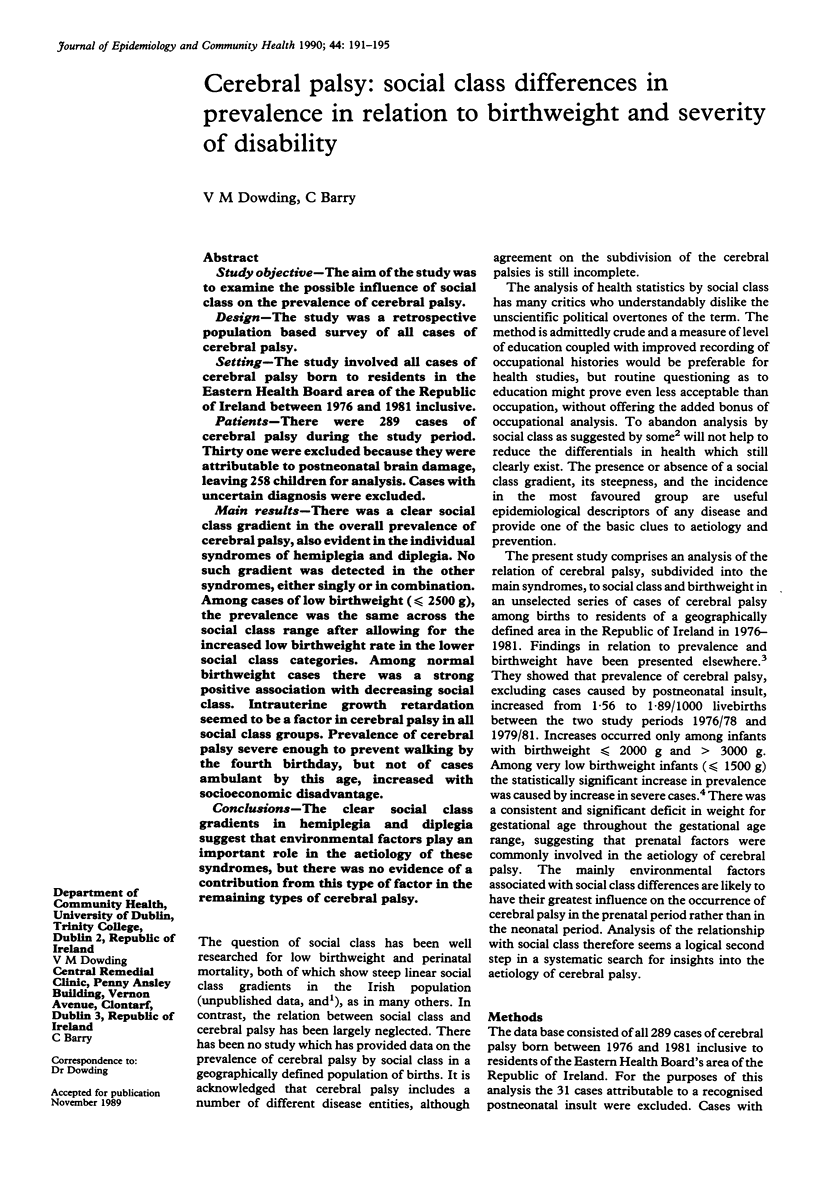
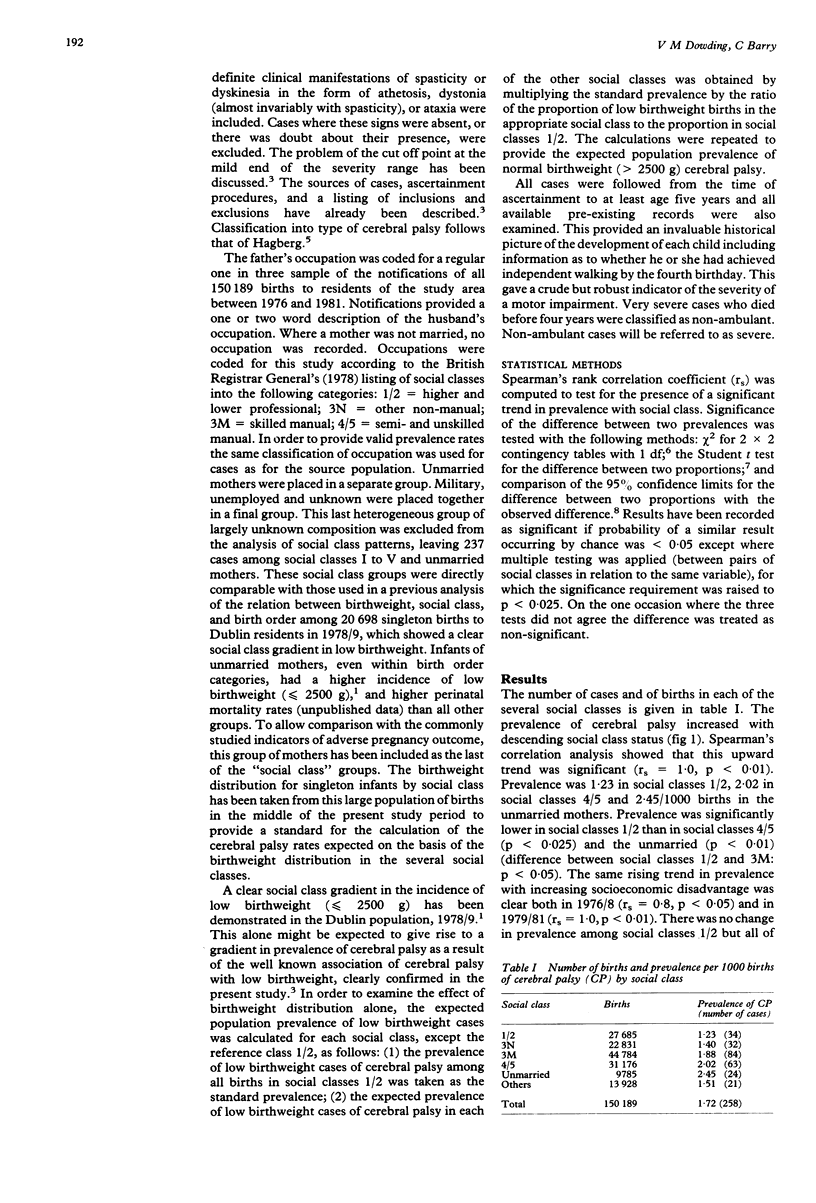
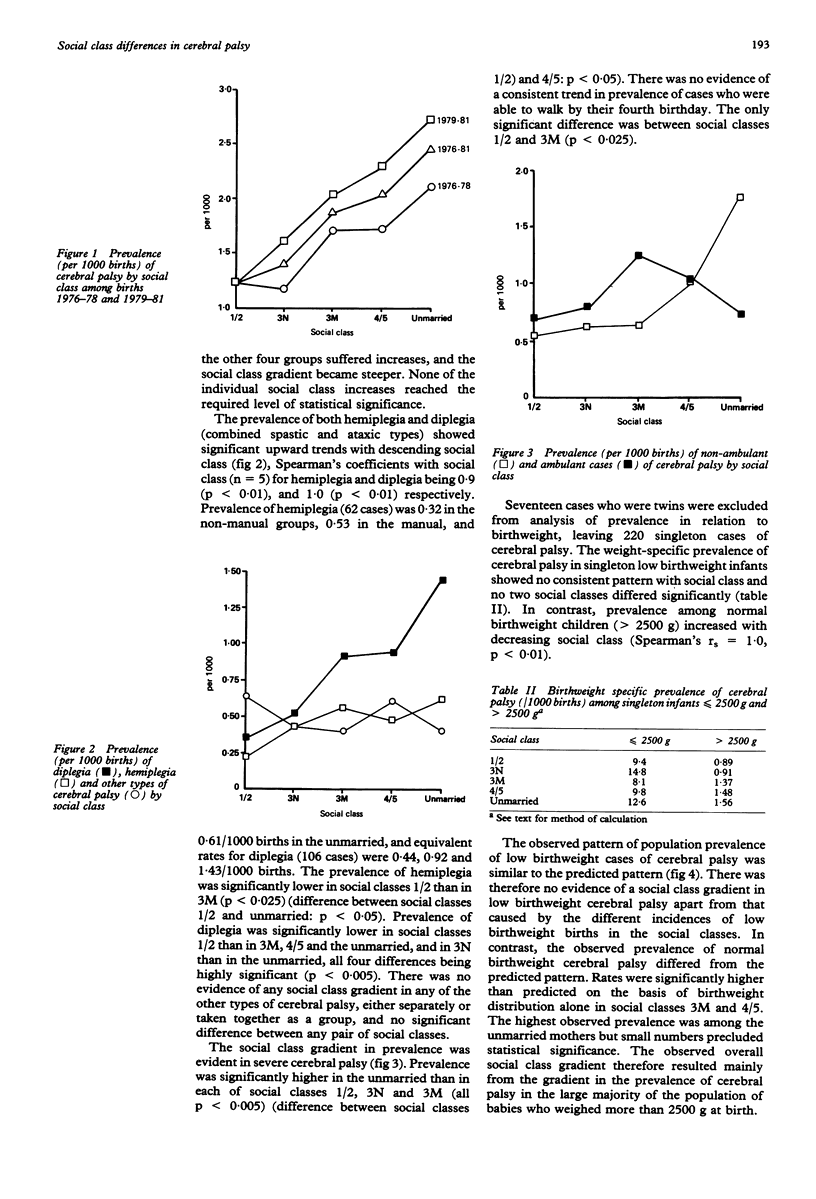
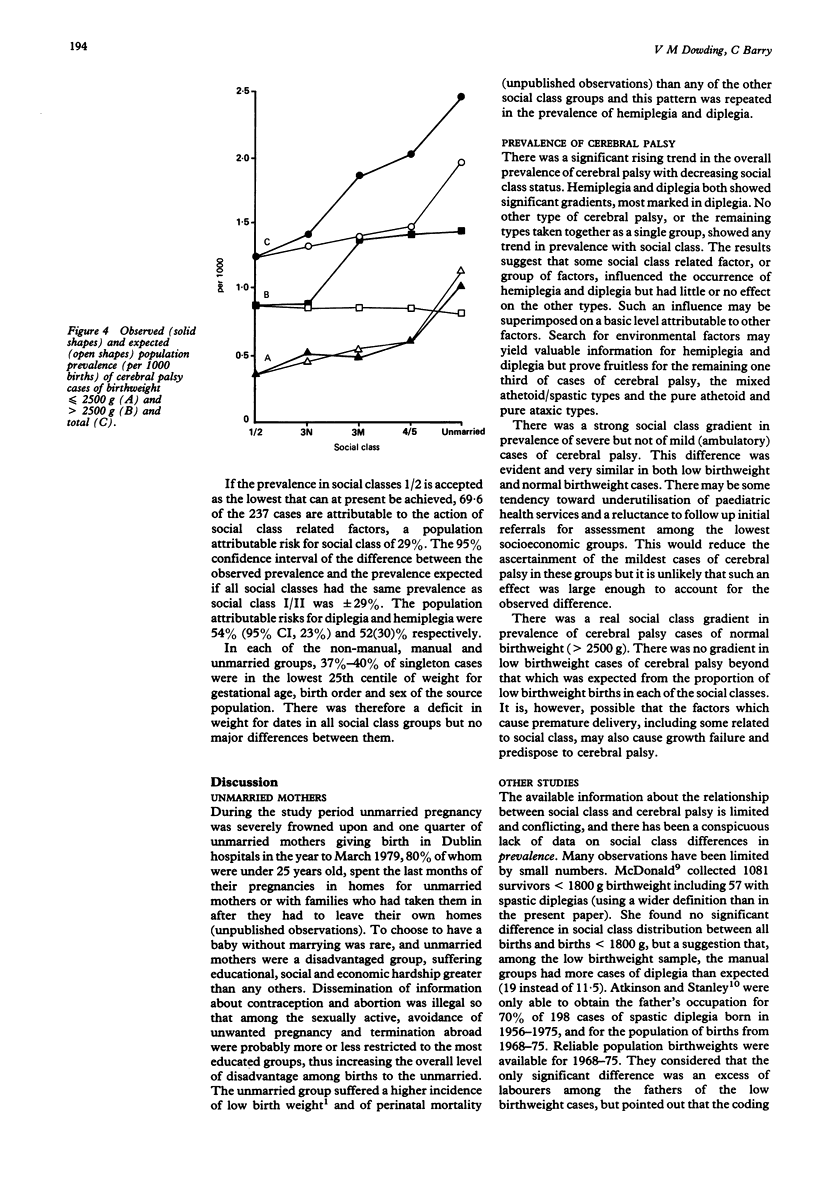
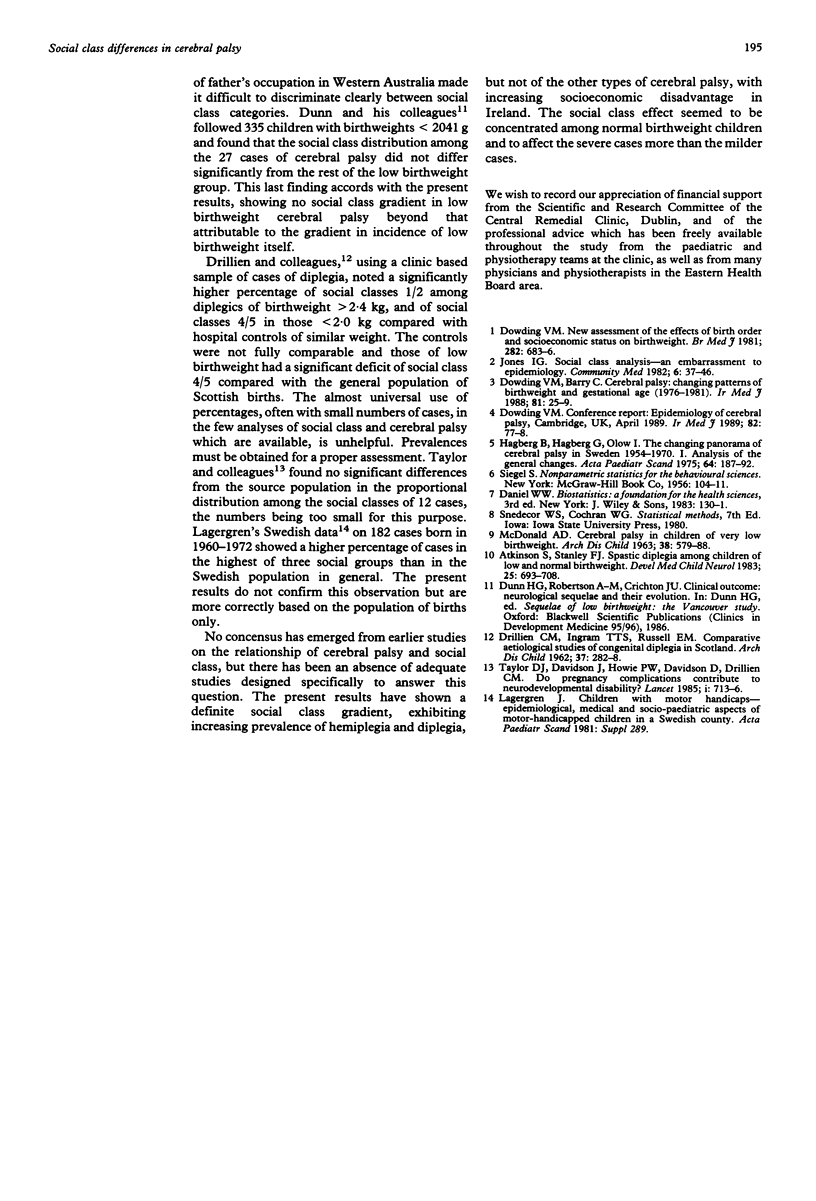
Selected References
These references are in PubMed. This may not be the complete list of references from this article.
- Atkinson S., Stanley F. J. Spastic diplegia among children of low and normal birthweight. Dev Med Child Neurol. 1983 Dec;25(6):693–708. doi: 10.1111/j.1469-8749.1983.tb13837.x. [DOI] [PubMed] [Google Scholar]
- DRILLIEN C. M., INGRAM T. T., RUSSELL E. M. Comparative aetiological studies of congenital diplegia in Scotland. Arch Dis Child. 1962 Jun;37:282–288. doi: 10.1136/adc.37.193.282. [DOI] [PMC free article] [PubMed] [Google Scholar]
- Dowding V. M., Barry C. Cerebral palsy: changing patterns of birthweight and gestational age (1976/81). Ir Med J. 1988 Nov;81(1):25–29. [PubMed] [Google Scholar]
- Dowding V. M. New assessment of the effects of birth order and socioeconomic status on birth weight. Br Med J (Clin Res Ed) 1981 Feb 28;282(6265):683–686. doi: 10.1136/bmj.282.6265.683. [DOI] [PMC free article] [PubMed] [Google Scholar]
- Hagberg B., Hagberg G., Olow I. The changing panorama of cerebral palsy in Sweden 1954-1970. I. Analysis of the general changes. Acta Paediatr Scand. 1975 Mar;64(2):187–192. doi: 10.1111/j.1651-2227.1975.tb03820.x. [DOI] [PubMed] [Google Scholar]
- Jones I. G., Cameron D. Social class analysis--an embarrassment to epidemiology. Community Med. 1984 Feb;6(1):37–46. [PubMed] [Google Scholar]
- MCDONALD A. D. CEREBRAL PALSY IN CHILDREN OF VERY LOW BIRTH WEIGHT. Arch Dis Child. 1963 Dec;38:579–588. doi: 10.1136/adc.38.202.579. [DOI] [PMC free article] [PubMed] [Google Scholar]
- Taylor D. J., Howie P. W., Davidson J., Davidson D., Drillien C. M. Do pregnancy complications contribute to neurodevelopmental disability? Lancet. 1985 Mar 30;1(8431):713–716. doi: 10.1016/s0140-6736(85)91261-9. [DOI] [PubMed] [Google Scholar]


